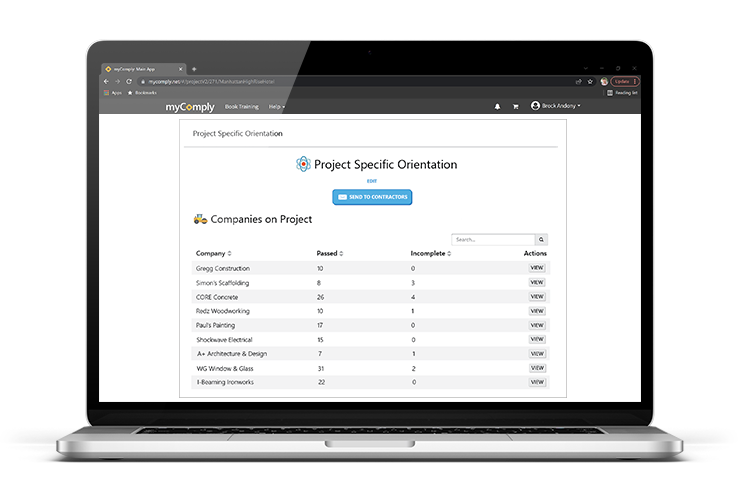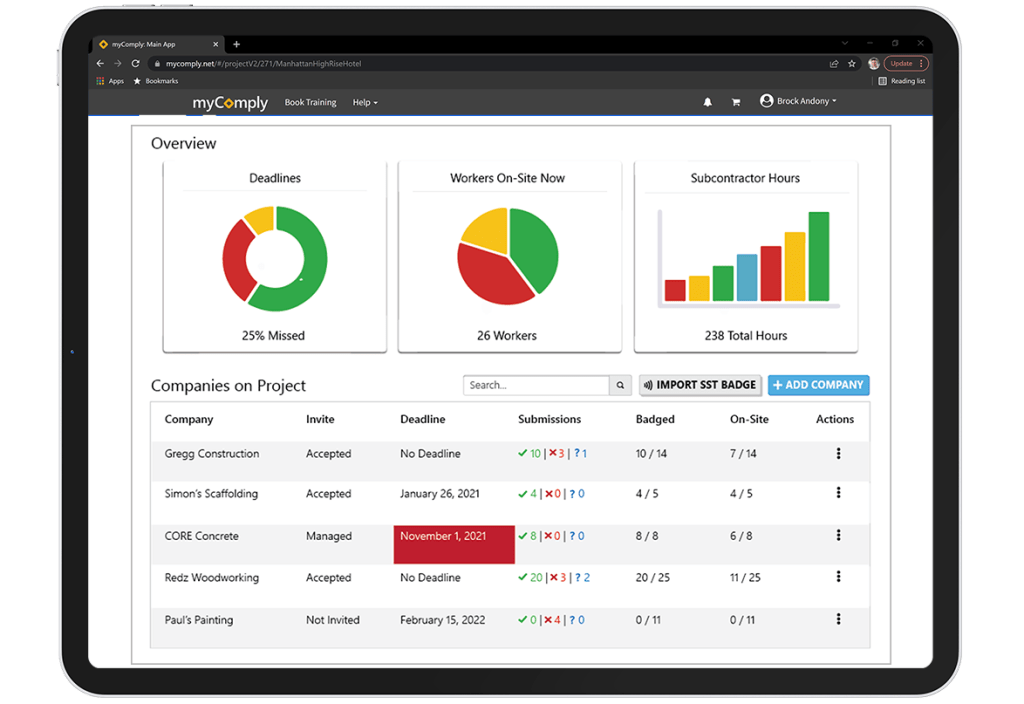Construction projects are seldom completed on schedule and at budget. This can lead to extensive costs and diminished margins for Asset Owners, General Contractors, Subcontractors, and all those that contribute to the completion of projects. To combat this, many Owners install a liquidated damages clause in their construction contracts to protect them from loss and motivate contractors to ensure that deadlines are met.
This article defines liquidated damages, explains how they are calculated, details the components of liquidated damages clauses, and shows how contractors can protect themselves from the negative impacts of liquidated damages clauses in construction.
Table of Contents
What are Liquidated Damages?
What are Liquidated Damages in Construction?
How Liquidated Damages in Construction are Calculated
The Liquidated Damages Clause: Legal Considerations
The Determination of Fault
Extension of Time (EOT) Clauses
Partial Possession and Sectional Completion
Early Use
How to Protect Your Firm from Liquidated Damages in Construction
1. Strengthen Owner-Contractor Relations
2. Secure Liquidated Damages Insurance
3. Leverage Construction Technology
Conclusion
What are Liquidated Damages?
Liquidated damages are a provision in some legal contracts that obliges one party to pay another contracted party a specified sum should one party breach the contract. This provision is typically used when losses to one party would be otherwise hard to define, attempting to bring a hard tangible value to contracted losses.
Some of the key characteristics of liquidated damages are as follows:
- They are intended to be fair, rather than punitive. Liquidated damages are designed to fairly and accurately account for loss, not to punish any party in the contract.
- Liquidated damages clauses are often used for asset loss without direct monetary correlation. For example, a liquidated damages clause might be drafted to assign a monetary value that is to be paid if one party shares “trade secrets” or sensitive business information with external parties.
Note: not all liquidated damages clauses will be enforced by courts. If the damages claimed in a contract provision are exceedingly large or disproportionate to the scope of loss, then courts may rule against the enforcement of the clause. Find out more on this in The Liquidated Damages Clause: Legal Considerations.
What are Liquidated Damages in Construction?
In construction, liquidated damages tend to pertain directly to one source of damage: project delays. In other words, liquidated damages clauses are drafted to protect owners from contractor delays extending beyond the agreed-upon completion date by billing the contractor a fair market rate for each day after scheduled completion.
How Liquidated Damages in Construction are Calculated
In the case of commercial property, it is much easier to assign a value to the loss stemming from project delays, being that lost revenue from property sales and rentals can be calculated easily.
For example, if the potential monthly rental income of a completed commercial property were estimated to be $150,000, and the project was completed 45 days late, then the liquidated damages could be calculated as follows:
$150,000 x (45 days = 1.5 months) = $225,000
That said, some projects are more difficult to assign value to, such a completed roadway. No matter the scenario, the most important thing for Owners and General Contractors to keep in mind is the defensibility of their claims.
For example, if an Asset Owner is claiming 225,000 in liquidated damages but cannot provide a clear explanation and calculation of the source of these damages, then their liquidated damages clause may be overruled in court.
The most defensible sources for liquidated damages include:
- Loss of rent
- Loss of income
- Additional costs incurred (ex. storage or rental costs)
- Financing costs (ex. interest expense)
The Liquidated Damages Clause: Legal Considerations
The first step in enforcing liquidated damages in construction is to draft a clause in the construction contract between asset owner and general contractor. If the terms of this contract are agreed upon by both parties, and the following conditions are met, then liquidated damages become enforceable.
The Determination of Fault
Construction projects are complex and project delays can stem from a variety of sources. Being that project delays can stem from owners (changes to project scope, financial shortfalls, etc) or contractors (inefficient labor deployment, supply chain issues, etc); it needs to be determined who is at fault for the delays before liquidated damages can be assessed and enforced.
Extension of Time (EOT) Clauses
As an extension to the determination of fault, provisions must be outlined under an Extension of Time clause which constitute “relevant events” by which the contractor may be granted an extension of time. Relevant events are those which are not the fault of the contractor and require a change in the projected completion date.
Frequent causes for extensions of time include:
- Client change order requests
- New or additional work not included in the original contract
- Latent conditions (unknown conditions at the time of contract signing that may impact delivery)
- Adverse or extreme weather conditions
Such a provision in a liquidated damages clause not only benefits the contractor. For liquidated damages to be enforced, there must be a targeted completion date for the project works. If timelines are not extended following “relevant events,” then contractors are only required to complete project work in a “reasonable time,” making it nearly impossible to enforce liquidated damages.
Partial Possession and Sectional Completion
Oftentimes, when construction projects near completion, clients and tenants may place substantial pressure on the General Contractor to allow partial possession of the property (if applicable). If outlined in the contract language, partial possession can allow contractors to grant clients/tenants access to sections of the project that have achieved “practical completion.”
As it pertains to liquidated damages, these clauses can allow contractors to offload the weight of some damages, by opening portions of the property to usage on or before the scheduled completion date.
Early Use
Like sectional completion clauses, early use mechanisms can permit the client to make use of parts of a project that may not yet be complete. If this has been outlined in the contract and partial use is possible, then this may help contractors to further reduce the weight of the liquidated damages that they are liable for beyond scheduled completion.
How to Protect Your Firm from Liquidated Damages in Construction
Though it may seem like liquidated damages aim to penalize contractors, the reality is that timely project completions benefit Owners and General Contractors alike. Owners want to leverage the completed product as soon as possible, and contractors want to ensure the greatest return on their resource investments. A delayed project inhibits both.
Here is what contractors can do to ensure timely completions and prevent liquidated damages.
1. Strengthen Owner-Contractor Relations
Though liquidated damages provisions might be outlined in a construction contract, that does not necessarily mean that these disputes need to be settled in court. Oftentimes, strong owner-contractor relationships can lead to more methodical resolutions to project delays.
They key to fair resolutions is that each party takes responsibility for their damages and follows the word of the contract.
- For Asset Owners, this means drafting fair (not punitive) penalties in their liquidated damages clause, taking ownership over Extension of Time events that are of their own doing, and potential relaxing timelines to maintain strong relations.
- For General Contractors, this means taking every necessary step to ensure the timely completion of a project, making amendments to project completion dates when changes occur, properly costing additional work, and taking ownership over any works not completed in accordance with the contract language.
2. Secure Liquidated Damages Insurance
Liquidated damages insurance is an add-on offered by some insurance providers that can offer General Contractors protection from the costs incurred in the event of a liquidated damages clause being enforced. Though this protection can vary from provider to provider, some of the typical coverages/exclusions are as follows:
| What is covered | What is not |
|
|
3. Leverage Construction Technology
Coordinating large-scale construction projects and adhering to strict timelines can be incredibly difficult without the help of modern construction technology solutions that help contractors to manage their project at a high-level and ensure timely asset deployment (labor and resources).
Here are some of the leading solutions for general contractors that want to mitigate the risk of liquidated damages.
1. Project Management Solutions
Project management solutions are aimed at helping contractors to digitally manage and optimize their project scheduling, resource deployment, and more.
Procore is the leading project management solution for General Contractors. This platform has several products that can help contractors to reduce their risk of encountering liquidated damages, such as:
- Design coordination. Project performance and predictability can be improved by connecting the design teams with project teams.
- Building information modeling. This advanced technology enables General Contractors to transform blueprints into interactive renderings of their construction projects, so they can easily visualize and schedule work as the project roles out.
- Project management. Centralize documentation and information on all your construction assets so that you can schedule and deliver each phase of the project on-time.
2. Workforce Management Solutions
Workforce management solutions are those that help contractors to manage one of the most volatile components of construction projects: labor.
myComply is the leading construction workforce management solution in-market. This end-to-end platform uses a systematic approach to target and reduce labor inefficiency in a variety of areas. Here is how it works:
- Digital orientations. Safety Managers and Superintendents spend upwards of 65% of their time training new workers on large construction projects. Rather than eating up valuable time from high-ranking site officers, myComply enables General Contractors to digitize their company-specific, project-specific, trade-specific, and all other orientation training. This means that all workers can be trained and onboarded before they arrive on site.

- Access control. Unqualified workers can be a risk to all those around them, creating unnecessary safety hazards and leading to costly fines for the General Contractors that are responsible for them. myComply’s access control hardware enables contractors to secure their site perimeters and establish certification-based access control, eliminating the risk of incidents that could lead to stop work orders or other costly delays.
- Time and attendance. The same hardware that enables access control also acts as a digital time clock, either actively (NFC badge reading) or passively (Bluetooth proximity reading) starting and stopping worker timeclocks while they are on site and when they leave the project. This eliminates costly labor inflation by tracking time on site down to the minute.

- Automated reporting. Need demographic data for external stakeholders? Certification documentation? Subcontractor hours? Worker-specific hours? Historical data in a liquidated damages defense? With myComply, you can instantly generate powerful reports across the entire duration of your construction project.

Conclusion
Though liquidated damages clauses can be daunting, they can also be a mutually beneficial aspect of contract language if they are written fairly and do not end in a court engagement between Asset Owners and General Contractors.
For Asset Owners, these clauses provide contractual protection from major delays at the fault of their chosen contractors. For General Contractors, liquidated damages can be a small cost and a powerful motivator for completing work on schedule.
As a General Contractor that is operating within the confines a liquidated damages construction clause, the best tactics at your disposal are to:
- Familiarize yourself with the contract language and know your rights as they pertain to the determination of fault, Extension of Time, partial possession, sectional completion, as well as early use.
- Foster strong relationships with your Asset Owner. If you are working with a trusted partner, then the odds of minor delays or project setbacks leading to the enforcement of liquidated damages clauses is reduced.
- Secure additional insurance to protect your firm against the costs of damages if the project owner enforces the clause.
- Leverage proven construction technologies to better manage your project timelines and your workforce deployment, preventing the risk of at-fault delays that could lead to liquidated damages.
myComply is the leading construction workforce management for General Contractors that want to realize the potential of their labor. If you are interested in unlocking unprecedented visibility into your workforce, reducing project costs, and minimizing the likelihood of liquidated damages clauses being enforced, then book a call with a product expert today to find out more.


